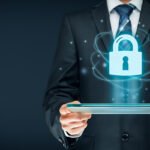Effective IT Project Management: Key Strategies for Success
In the realm of Information Technology (IT), project management plays a crucial role in ensuring the successful delivery of projects on time, within budget, and with the desired quality. With technology evolving at a rapid pace, IT project managers face unique challenges in coordinating complex projects and aligning them with organizational goals. In this blog, we will explore key strategies and best practices for effective IT project management.
Define Clear Project Objectives: One of the fundamental aspects of IT project management is setting clear and concise project objectives. Clearly define the project’s scope, deliverables, timelines, and budgetary constraints. Engage stakeholders, including clients, end-users, and team members, in the objective-setting process to ensure alignment and shared understanding. Well-defined objectives lay the foundation for successful project execution.
Plan and Sequence Activities: Develop a comprehensive project plan that outlines the activities, milestones, and dependencies involved. Break down the project into manageable tasks, estimate resource requirements, and determine realistic timelines. Use project management software to create Gantt charts or other visual representations to help track progress and manage dependencies effectively. A well-structured project plan enables better coordination, efficient resource allocation, and effective risk management.
Build a Skilled and Diverse Project Team: Assemble a skilled and diverse project team comprising individuals with relevant expertise and complementary skills. Assign roles and responsibilities based on team members’ strengths and create a collaborative environment that fosters effective communication and knowledge sharing. Encourage cross-functional collaboration and leverage the diverse perspectives of team members to drive innovation and problem-solving.
Communicate Effectively: Effective communication is critical in IT project management. Establish clear channels of communication, both formal and informal, to ensure that information flows smoothly among stakeholders. Regularly communicate project updates, milestones, and risks to team members, clients, and other relevant parties. Emphasize active listening and encourage open and transparent communication to address challenges, resolve conflicts, and maintain stakeholder engagement throughout the project lifecycle.
Proactively Manage Risks: IT projects often involve inherent risks, including technological complexities, changing requirements, and resource constraints. Develop a risk management plan to identify, assess, and mitigate potential risks. Regularly review and update the risk register, involve the team in risk identification, and implement appropriate mitigation strategies. Proactive risk management minimizes the impact of unforeseen events and ensures the project stays on track.
Embrace Agile Methodologies: In the dynamic IT landscape, Agile methodologies have gained popularity for their flexibility, adaptability, and iterative approach. Consider adopting Agile frameworks, such as Scrum or Kanban, to manage projects with changing requirements and evolving priorities. Agile methodologies promote collaboration, empower team members, and enable faster response to customer feedback, resulting in improved project outcomes.
Monitor Progress and Adapt: Regularly monitor project progress against the established plan and key performance indicators (KPIs). Implement project tracking tools to measure and report progress, identify bottlenecks, and make data-driven decisions. Embrace a culture of continuous improvement by conducting periodic project reviews, soliciting feedback from stakeholders, and implementing lessons learned. Adapt the project plan as needed to accommodate changes and optimize project outcomes.
Foster a Culture of Learning: Encourage a culture of learning within the project team and the broader organization. Provide opportunities for skill development, knowledge sharing, and professional growth. Promote a supportive environment where team members can experiment, learn from failures, and celebrate successes. Invest in training programs, certifications, and workshops to enhance the project team’s capabilities and ensure their skills remain up-to-date with the latest technological advancements.


































